Thanks so much to those who joined last week’s Commons Feast. Although we had several bookings, we ended up being a small, yet perfectly formed group with lots of discussion. I set the scene with an introductory provocation around Famine Foods, which you can read in full here on Substack, which kicked off our dialogue.
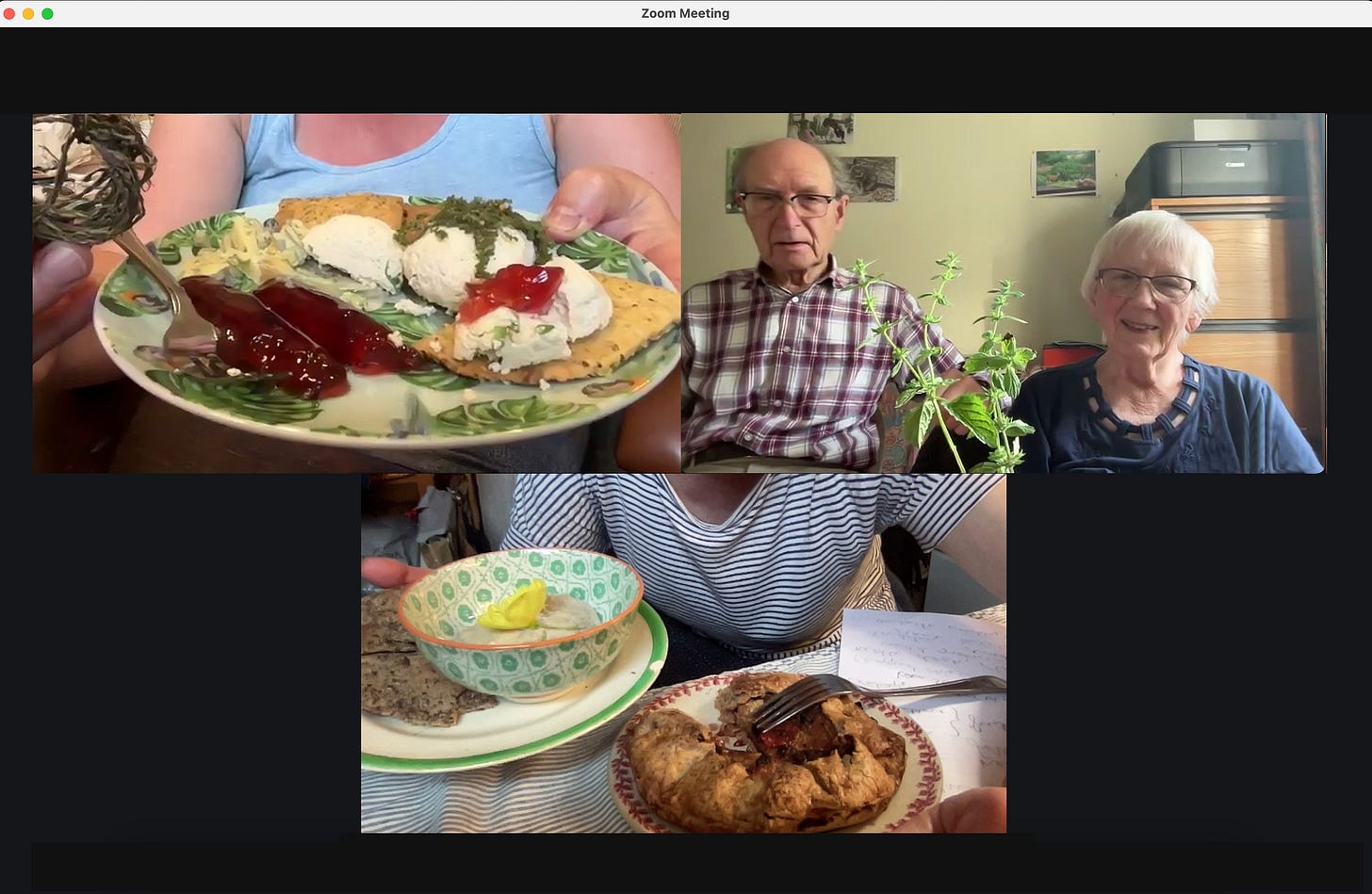
We heard first about rook pie, once a country staple and dish of necessity that was eaten by one participant regularly as a child. Their father, who worked at a gravel pit was often gifted the rooks after a cull. He had little memory of its taste but remembers that he certainly ate it as there wasn’t anything else. This prompted me to think about offal and to share some of my previous work, notably my Reflection on Digestion performance dinners which I made a few years ago, where participant diners were served parts of the digestive system, tongue, liver, stomach (tripe) and intestines in the form of andouillette sausage. For the project, I researched dishes made from these ingredients discovering that in the UK, much of our offal dishes were purposely shunned after the Second World War in favour of flesh meats, so as to forget the trauma of rationing and food scarcity. We heard of participants’ childhood experiences of being made to eat tough livers, and one participant’s lament that they could no longer acquire lamb’s tongues.
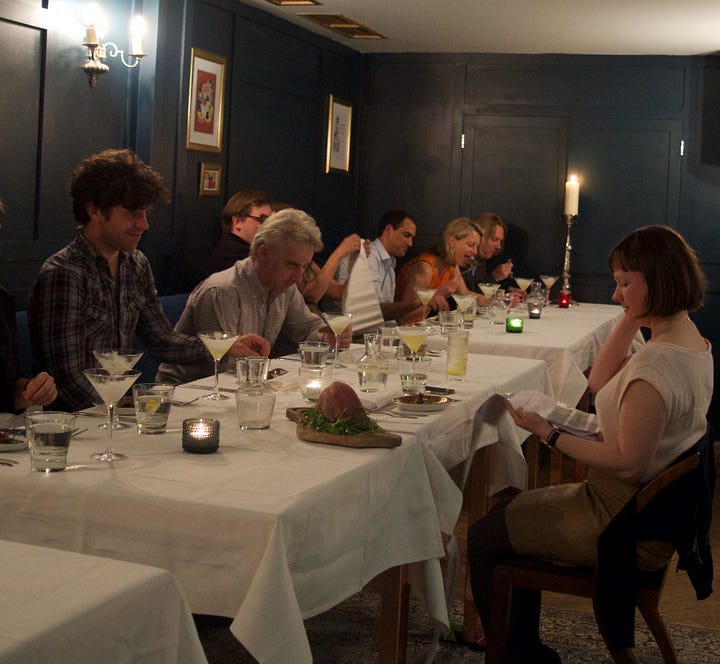
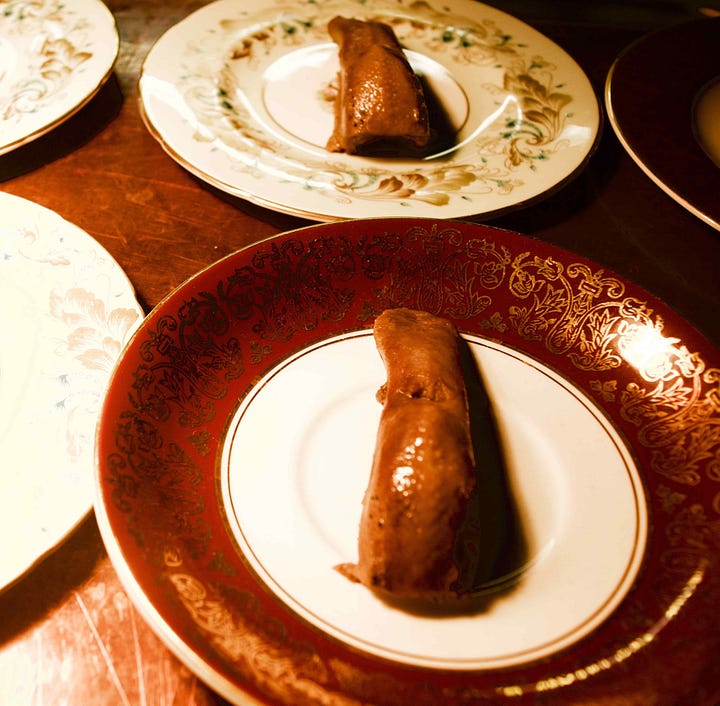
Nettles were a source of free and abundant nutrition for our ancestors, particularly in times of hardship and it is recorded that they were eaten during famines in Ireland and Russia. One participant shared another use for them, in cheese making. Inspired by a Mo Wilde recipe, they gathered and cooked some new tops that have re-appeared again being chopped back, and used the ‘wort’ as the rennet to separate the curds and whey. It didn’t work exactly as planned, and so they started the process again with some of their homemade crab-apple cider vinegar, which this time prompted a fast curdling. But they are keen to try again with nettles, as am I!
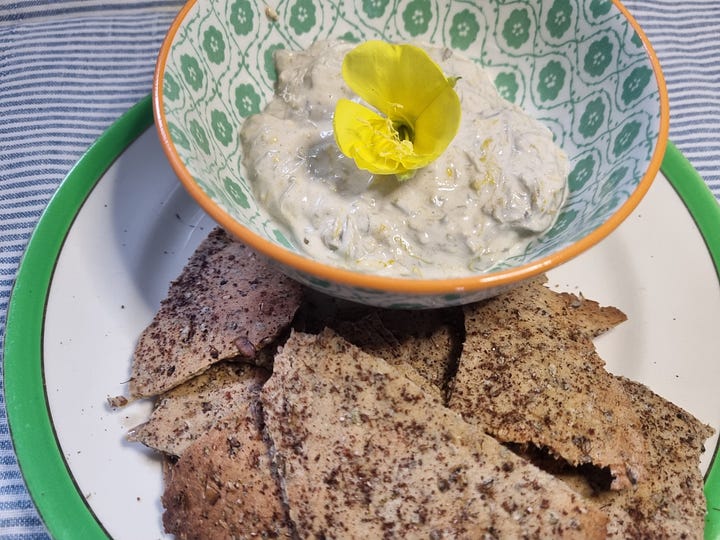
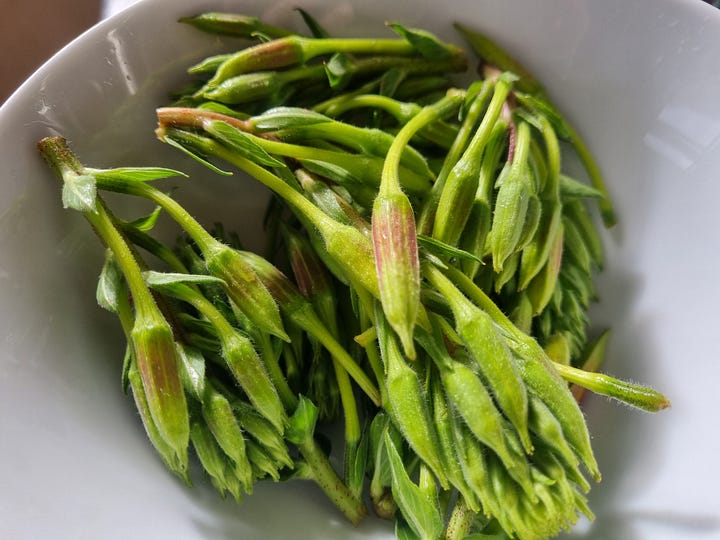
Two of us had made crackers from a mix of seeds, nettle, plantain, dock. One participant added their dried leftover wild greens mix to flavour them, acting as a perfect accompaniment to their homemade ricotta, and fruit ‘cheese’ made from wild plum and rosebay willowherb. My crackers with a nettle and plantain seeds base, were flavoured with mugwort buds, and topped with dock and wild garlic salt sprinkles. I used them as a vehicle to transport my experiment with an evening primrose buds yogurt-based dip. On first tasting, I wasn’t convinced, but after a few mouthfuls I got used to the taste and actually quite liked it.
We pondered the experience of eating foods that were entirely new to the palate, how our tastebuds change as we expand our experience of flavour profiles and become open to a range of new wild edibles. In a more conventional dish, I also made some of my cherry plum haul into a filling for a little rustic galette tart.
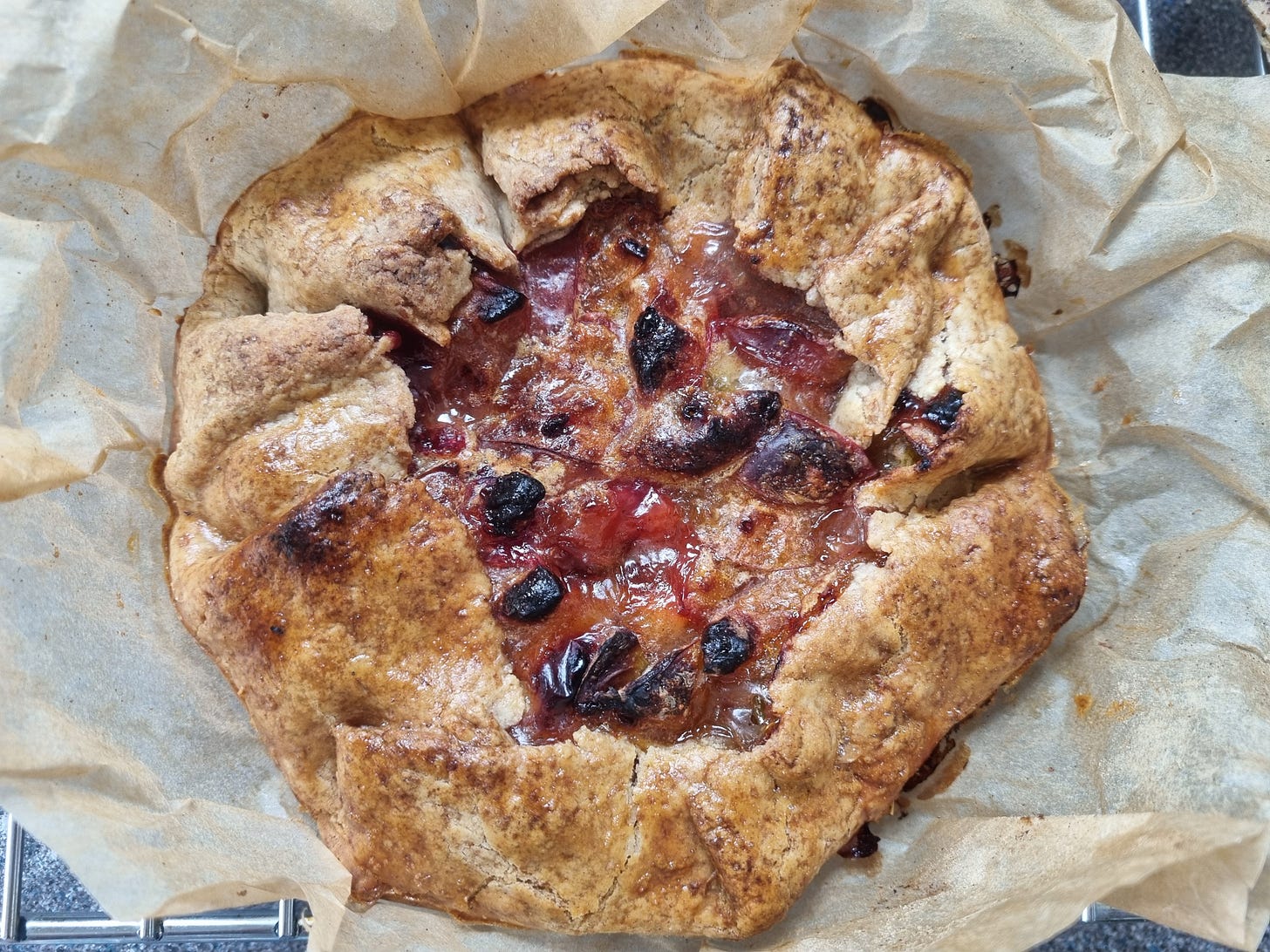
Some have been drinking their St. Germain-style elderflower liqueur, and others using the abundance of lemon balm on their allotment as a refreshing tea. We discussed other examples of what might have been tea replacements, for example, rosebay willowherb leaves, which is also known as Ivan chai or Koporye, a traditional Russian tea.

We learnt that mugwort and mullein were used as alternatives to tobacco and talked of other plants that could be used in times of hardship, to save money but also to reduce packaging waste and reliance on multinationals. One participant shared how they have replaced their laundry detergent with one made from inedible horse chestnuts. They gather a biscuit tin’s worth in the autumn and chop them up when they are still fresh. Then once a week they make up a batch by adding some of the nut pieces to water, keeping it in the fridge for freshness. When they are doing a wash, they give the bottle a good shake to illicit a productive foam before straining and adding the liquid and bubbles to the machine.
Before we parted ways for a couple of months (as there won’t be an August meet-up), we shared excitement for what we are looking forward to collecting. Blackberries were on the top of the list, for jellies, jams, to flavour gin, and just to eat! Pears, apples, crab-apple, rosehips, sloes, haws, and sea buckthorn are all eagerly awaited. Given the number of elderflowers this year, I am really looking forward to gathering elderberries, as last year I didn’t manage to pick any. I’m also going to pick some of the abundant evening primrose flowers in my garden, learning that I can dry them and use them as a tea, or infuse in oil, to help relieve some of the perimenopausal symptoms I am experiencing.
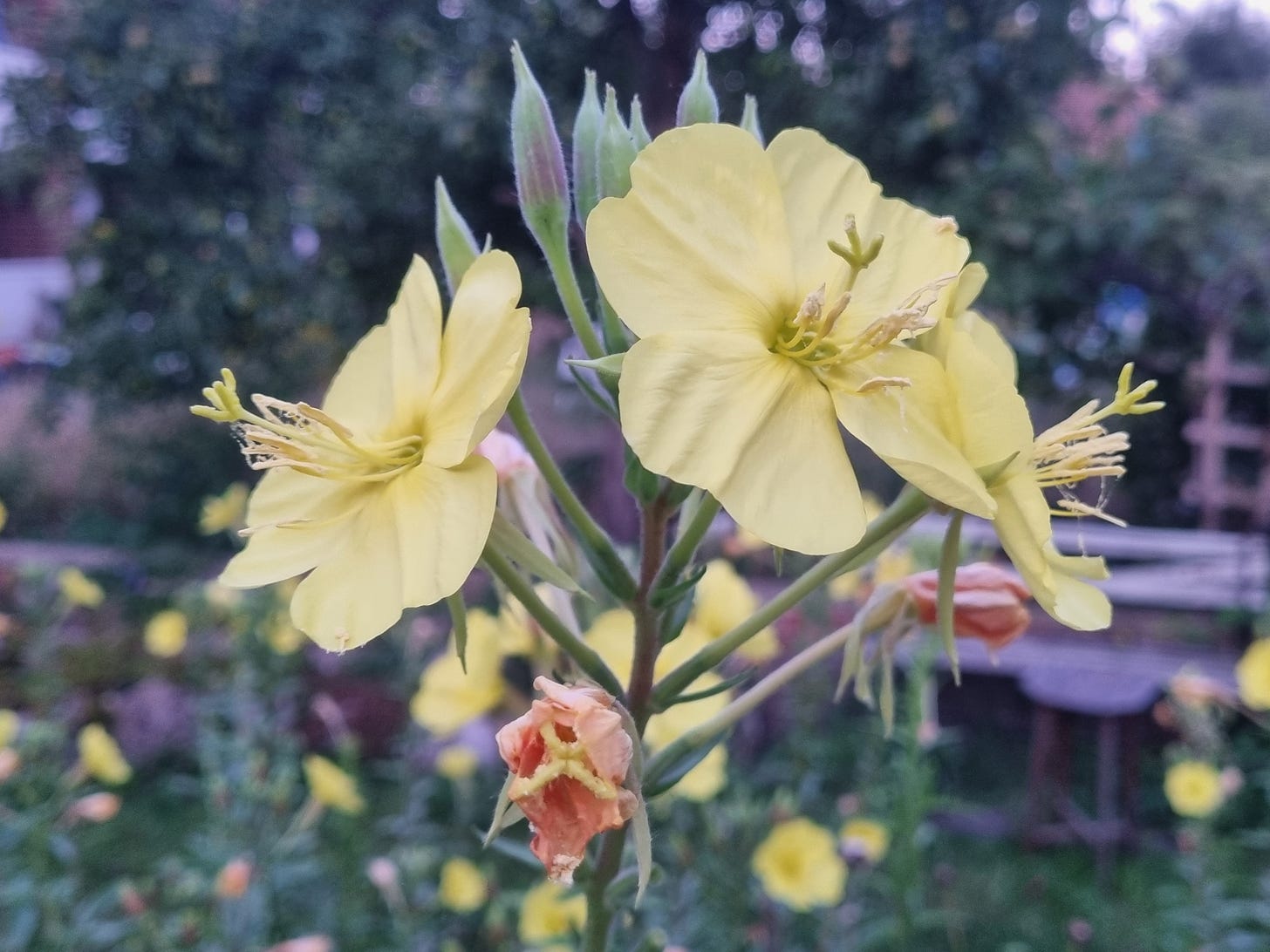
The next event is on Tuesday 17 September, 7-8pm. Go to the Eventbrite link to sign up. It is free and all are welcome.



